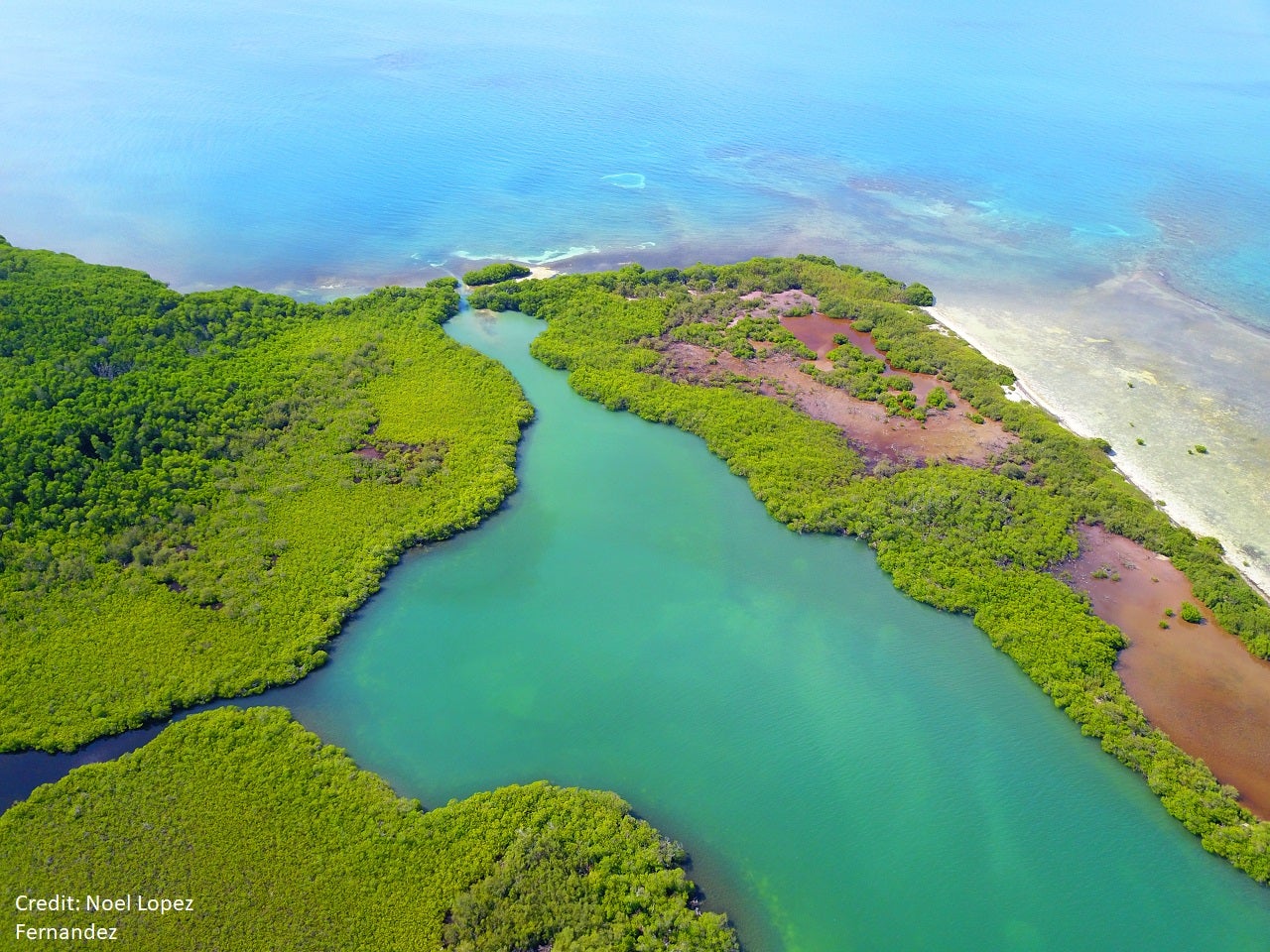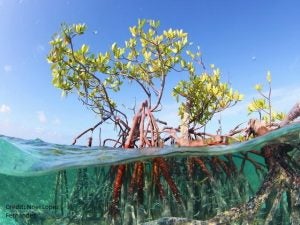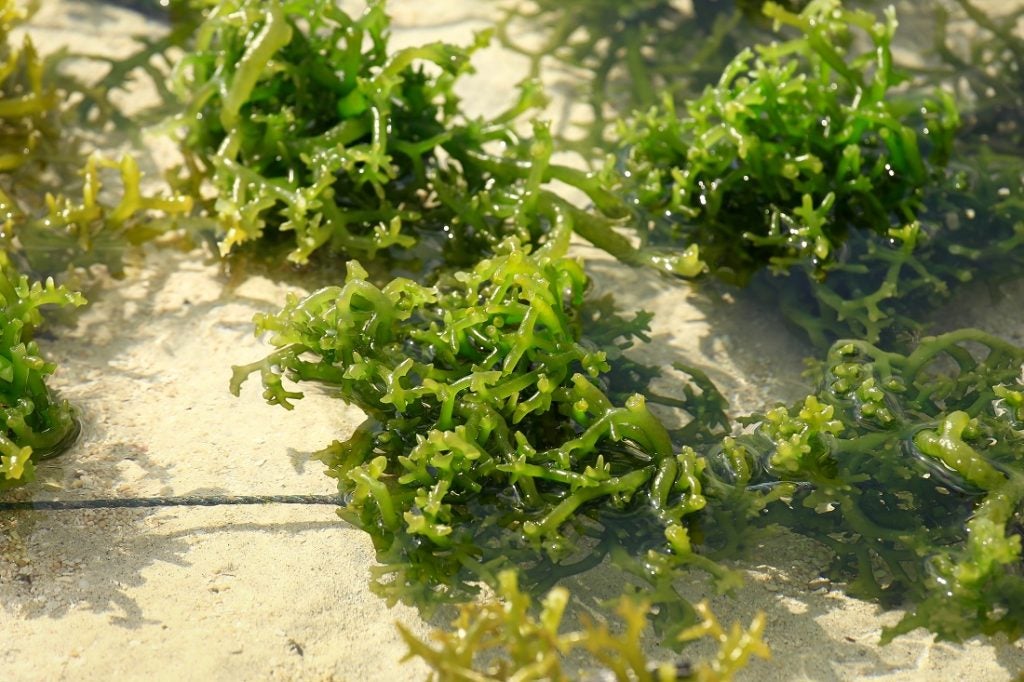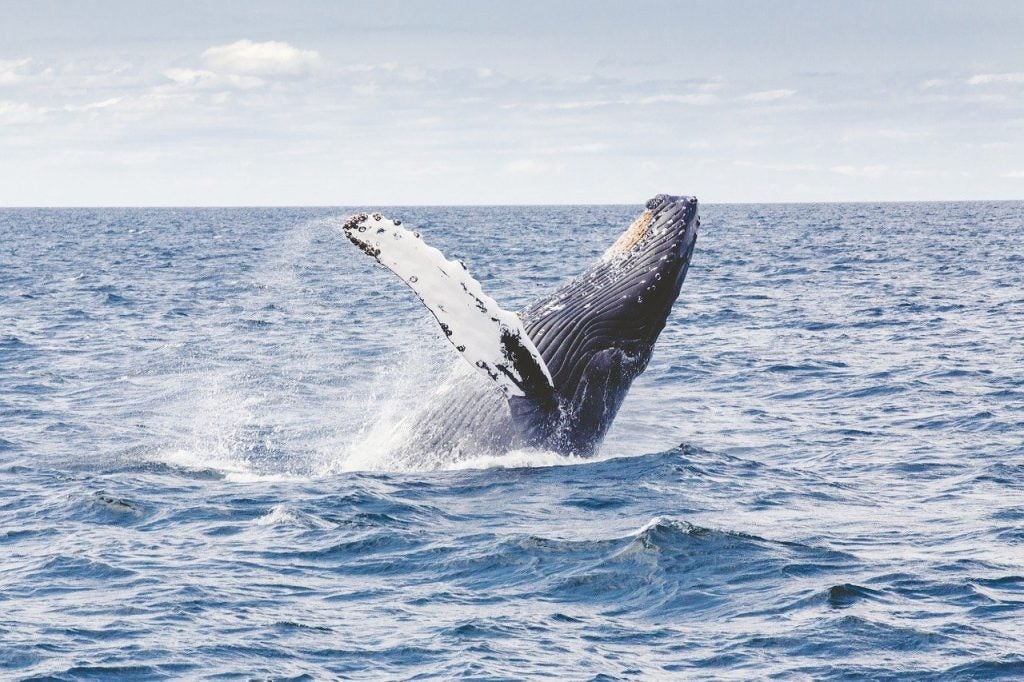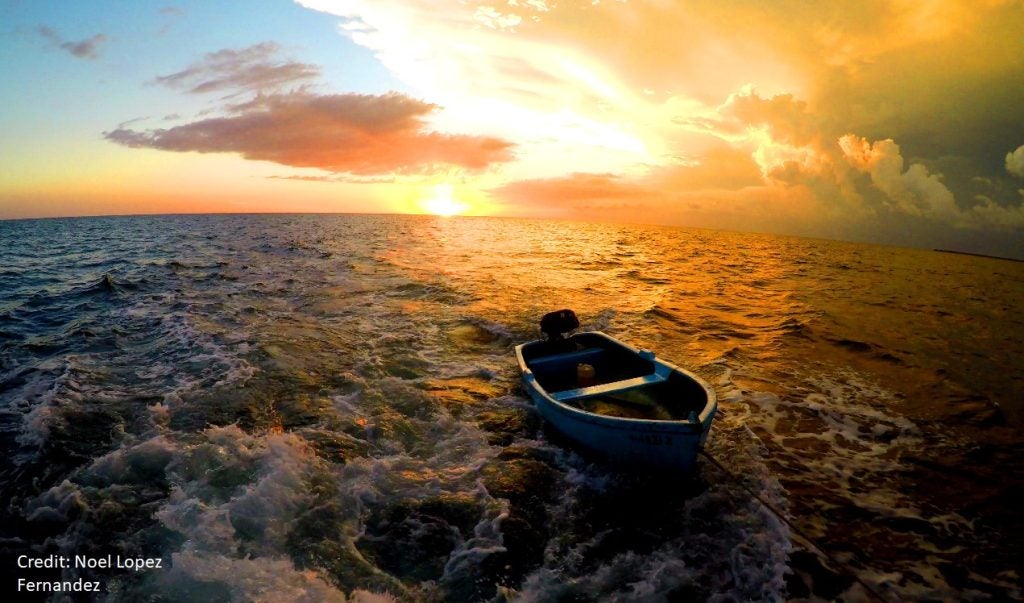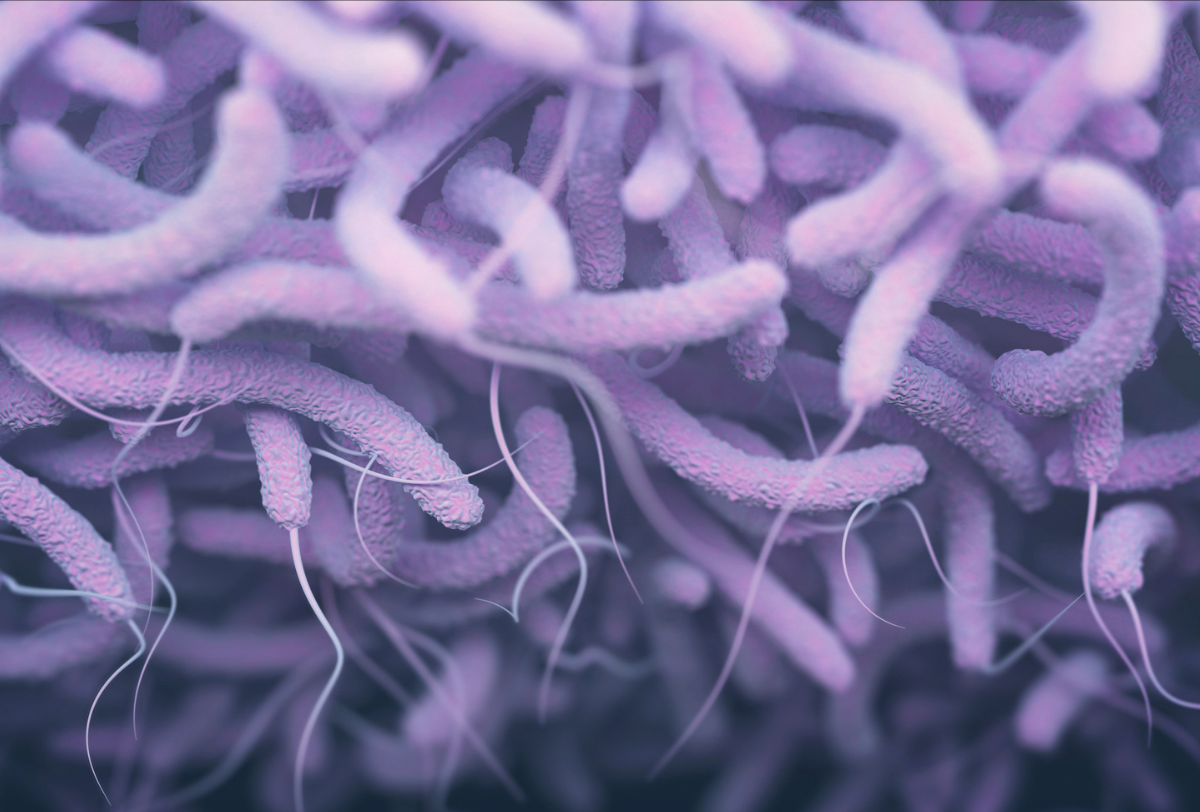Blue carbon: A better tomorrow begins below
By: Kristin M. Kleisner and Jamie Collins
As we embark this year on the United Nations Ocean Decade, you may be hearing quite a bit about blue carbon. But what is it, and why is it so important for the future of our planet? Well, the oceans play a critical role in trapping carbon, and they have absorbed about a third of all human-generated carbon emissions since the start of the Industrial Revolution. This is important because the carbon that human activity has released into the atmosphere acts as an accelerator of climate change.
When carbon is stored naturally in the various parts of ocean and coastal ecosystems — sequestering it, or taking it out of the atmosphere, where it could contribute to warming — we call it blue carbon. The blue carbon storage reservoir includes waters, sediments, and marine plants and animals. Unfortunately, loss of habitat, overfishing and other human impacts, including those from climate change, are reducing the ability of the oceans to trap carbon. That’s why we are exploring pathways to restore these benefits now and help to secure a better future for us all. You can learn more about blue carbon and some of the ways in which we may be able to restore key pathways using this interactive site.
First, let’s consider some of the various habitats and biota in the oceans and how they work to store carbon…
Coastal Habitats
Coastal habitats such as mangroves, seagrasses and salt marshes are some of the most well-known blue carbon stores on the planet. They sequester large amounts of carbon in sediments, locking more carbon away — and often for longer than soils on land. When these coastal habitats are degraded or destroyed, their ability to store carbon is reduced, and carbon that has been sequestered can be released back to the atmosphere, thereby ramping up the effects of global climate change.
As is the case with nearly all these blue carbon pathways, we still don’t fully understand how much carbon coastal ecosystems can help us store — but the importance of these habitats extends beyond just carbon storage. Coastal ecosystems provide critical nursery habitats for baby fish, supporting biodiversity as well as recreational fishing and tourism opportunities. They also support food provisioning and livelihoods from healthy fisheries from the fish that live in or depend on these areas. Mangroves, seagrasses and marshes also help filter nutrients and pollutants, improve water quality and help to protect the coastline from erosion and climate-induced storm surge. These benefits are not something we can afford to lose and therefore, we must protect these habitats from destruction and, where possible, work to restore these systems so that they function effectively.
Seaweed Forests and Farms
Seaweed forests are found in coastal waters and are capable of sequestering large amounts of carbon quickly due to their rapid growth. As the seaweed grows, fronds break off and are carried out to sea by currents. The sinking of some of these fronds in the deep ocean — where they decay into deep ocean sediments — serves to trap carbon for a very long time.
Seaweeds can also be farmed, potentially amplifying their ability to serve as carbon storage pathways if the seaweed is either harvested and sunk or used in products that help sequester more greenhouse gases. For example, developing the seaweed into a feed for cattle that reduces animal methane emissions, developing new products from seaweed such as long-lasting bioplastics that can replace plastics derived from fossil fuels, or converting seaweed into biofuels to replace fossil fuels can all help to sequester more carbon or avoid greenhouse gas emissions.
Whales and Big Fish
Marine animals can also play critical roles in the cycling and storage of carbon and other elements in the oceans. Whales and large fish, for example, help the oceans trap carbon by foraging deep in the sea and eating smaller fish and crustaceans, such as krill. They store much of the carbon and nutrients these smaller species contain and then recycle the remainder throughout the oceans, along with important nutrients. When this recycling occurs in the sunlight surface ocean, these nutrients can help stimulate the growth of phytoplankton through photosynthesis, which ultimately absorbs carbon dioxide from surface waters. Big fish also help send carbon quickly into the deeper ocean when they excrete dense fecal pellets.
Given the role of whales and big fish in carbon cycling and their role in structuring the world’s marine ecosystems, as well as tourism and high-value recreational fishing benefits, sustainable management and conservation practices that prevent overfishing, reduce ship strikes and fishing gear entanglement, and allow for population recovery are paramount.
Mesopelagic Fish and Invertebrates
Another important set of species, the mesopelagic fish and invertebrates live in the ocean “twilight zone,” the murky waters between the base of the sunlit euphotic zone, which is at 100-200 meters depth, and the deep bathypelagic zone, where, at 1,000 meters depth, no light is visible. These creatures travel into the shallower surface waters at night where they prey on plankton and each other and then migrate down several hundred meters to their daytime depths. When they retreat into the deep ocean, they act as a “carbon elevator,” bringing much of the carbon and nutrients they consumed back down with them and trapping it away from the atmosphere.
Unfortunately, we know very little about these fish — even how many there are — but new evidence suggests they may together trap millions of tons of carbon each year by moving it to the deep ocean. Mesopelagic fish are being considered as potential targets for commercial fishing, and in a few cases, are being targeted already. Reductions in mesopelagic biomass could strongly negatively affect the oceans’ ability to trap carbon from the atmosphere. Therefore, we should protect these species’ ability to trap carbon in the oceans by limiting or prohibiting all fishing in the mesopelagic zone, at least until we learn more about this system.
The Bottom Line
The oceans serve the planet as a massive natural carbon sink, but because of climate change, overfishing and other pressures, we’ve degraded the natural pathways through which carbon is sequestered in our oceans. To secure a better future, we must understand and restore blue carbon pathways, and we must consider ways to generate new pathways that value entire ocean and coastal ecosystems. By doing so, we may be able to sequester more carbon, rebuild thriving ocean ecosystems and bring a multitude of other much-needed co-benefits to human society and the environment.










